This article is part of the “COVID-19 and education: Five years later” series in which Brown Center experts and external contributors reflect on the five-year anniversary of the COVID-19 pandemic and its ongoing impact on education policy, politics, and practice.
March 2025 marked five years since the U.S. declared a national emergency concerning COVID-19 on March 13, 2020. Students’ educational experiences shifted suddenly in the early weeks of the pandemic, and education across all school levels—early childhood, K-12, and postsecondary—has changed in fundamental ways in the intervening years. Below, Brown Center scholars share their reflections on how COVID-19 reshaped education policy, practice, and politics in the United States.
Continued turbulence ahead for the K-12 teacher workforce
The K-12 teacher workforce has been on a rollercoaster ride over the last five years. From the quickly shifting nature of classroom instruction to the seemingly nonstop teacher shortages, teachers have been central to schools’ responses to and recovery from the pandemic.
On March 12, I attended the annual CALDER conference at American Institutes for Research, where several presentations offered pandemic-era retrospectives relevant to teachers. Here I offer four takeaways.
- Excellent teaching has emerged as a compelling recovery strategy. Of the learning recovery practices supported with stimulus funds, the most promising results intentionally assigned struggling students to expert teachers. Further, it was also the only strategy to show large benefits at scale (compared against tutoring, where large impacts shriveled as efforts reached more students). Thus, teachers should remain key to recovery efforts, as students are still well behind pre-pandemic performance levels.
- Teachers’ working conditions have declined substantially. An analysis of an Illinois working conditions survey shows teachers’ jobs are growing more difficult. Several of the biggest challenges relate to students: Assessments of classroom disruptions, student responsibility, and the quality of student discussions have all nosedived. Combined with stubbornly high rates of chronic student absenteeism, these findings suggest teachers are now having a tougher time engaging students, hobbling recovery efforts.
- Districts’ hiring strategies are misaligned with hiring the workforce that would best serve students. We’ve long known about the misalignment between teacher demand (where teachers are most needed in high-need schools and subjects) and teacher supply (not in those areas), and new pandemic-era results from Washington state reinforce that understanding. Districts also have historically prioritized teacher quantity over quality (counter to item 1 above). Combined, the evidence points to a missed opportunity during the pandemic: Throwing caution to the wind, many districts went on a stimulus-fueled hiring spree (for both ) while doing little to target resources where teaching needs were critical.
- Unfortunately, the teacher workforce must brace for another drop. As stimulus funds have dried up, reductions in force may be inevitable in the same places that struggled to fill classrooms just two years ago. But if districts prioritize settings, subjects, and quality in implementing any layoffs, they can minimize the harm to the neediest students.
How the pandemic uprooted the student loan system
At the start of the pandemic, the Department of Education froze student loan payments, providing borrowers with significant financial relief amidst economic uncertainty. As Figure 1 illustrates, the amount of loans in repayment at this time went from $693 billion to $11.3 billion and the amount in forbearance went from $162.6 billion to $887.8 billion (2020 Q2 vs 2020 Q3).
Restarting the student loan collection apparatus has been challenging. When the payment pause ended in October 2023, about $999.4 billion in loans entered repayment, but between then and January 2024, 10 million borrowers were past due on their payments. An “on ramp” period after payments resumed did not report missed or late payments as delinquent to ease the transition back into repayment, which may explain some of that nonpayment. However, recent reports suggest that since the “on ramp” ended in October 2024, about four million borrowers have become delinquent on their loans. Further complicating restarting repayments are legal challenges to the “SAVE” income driven repayment program Biden established. Borrowers enrolled in SAVE have been moved back into forbearance, and as of October 2024, only about $599 billion in loans were in repayment, with $497.5 billion back in forbearance. ED estimates borrowers currently in SAVE won’t enter repayment until December 2025. While the pandemic pause was a significant benefit to borrowers facing financial struggles, after five years of constantly evolving repayment policies, one of the enduring legacies of the pandemic will be millions of borrowers left deeply confused about how to navigate the federal loan system.
Harmful, inaccurate narratives about schools and families have undermined education recovery efforts
If your only understanding of how the pandemic impacted schooling in the U.S. came from media headlines, you would likely come away with three main takeaways:
- Unreasonably prolonged school closures are to blame for pandemic learning disruptions;
- Parents were insufficiently concerned about and invested in academic recovery efforts;
- Contemporary right-wing parents’ rights movements emerged as a response to frustration over school closures and unprecedented insights into school curriculum through remote learning
These overly simplified conclusions are plain wrong. One, multiple community-level factors contributed to pandemic-related “learning losses.” Two, while we know little about parent interest in academic recovery, we do know that the information parents did receive—in the form of school report cards—was often insufficient, if not outright inaccurate. And three, despite intentionally misleading rhetoric, many of the prominent parents’ rights organizations (e.g., Moms for Liberty) that emerged during the pandemic were well-funded astroturf organizations with deep connections to the conservative establishment.
What’s worse, these narratives have undoubtedly contributed to an acceleration of unprecedented attacks on the very premise of public education. Since the pandemic, the expansion of private school choice in red and purple states has proliferated, with policymakers often using these talking points to justify their actions. To date, 12 states have adopted universal Education Savings Accounts—a scheme to redirect public funding away from public schools to subsidize private schooling (with benefits largely accruing to the wealthy).
As we reflect on the five-year anniversary of the COVID-19 pandemic and the numerous existential threats to public education, it’s vital we leave these harmful narratives behind and focus on the important work of supporting students, families, and schools.
COVID-19's lasting cultural and political effects on K-12 education
I think that some of the most enduring impacts of COVID-19 on K-12 education will be cultural and political. Education leaders have reported a cultural shift since the pandemic, with students and parents seeming to believe that school is less essential—and school attendance more optional—than they did previously. I’m not sure that we’ve fully grappled with the implications of that shift, if it’s real, but it certainly could be contributing to stubbornly high rates of chronic absenteeism.
On the political side, Republicans’ satisfaction with U.S. public schools fell off a cliff after the initial school shutdowns, and we’ve seen only a modest recovery since then (see Figure 1, below). That political shift has revealed itself in a variety of ways, from the rise of Moms for Liberty to a push in GOP-led states for large-scale private school choice programs that are hostile to public schools. These programs are poised to change the foundational structures of many states’ education systems—while disproportionately benefiting the wealthiest families and wreaking havoc on our educational values and traditions.
We’ll never know how 2025 would have looked if the pandemic hadn’t happened. However, it’s certainly plausible that conservative backlash against school shutdowns, coupled with Democrats’ reluctance to engage on education issues, turned schools into the battlegrounds where America fought many of its culture wars. Unfortunately, we seem to be living with the consequences.
Can state and local school systems regain public trust in education?
Public confidence and parental satisfaction with public schools remain a challenge as the nation marks its fifth anniversary of the COVID-19 pandemic. Social isolation of students and the uneven quality of remote instruction demonstrated a general lack of school readiness during the public health crisis. Will state and local school systems be able to regain public confidence as federal recovery grants come to an end and with the looming dismantling of the U.S. Department of Education?
The challenge is well indicated by persistence of student chronic absenteeism, slow academic recovery, and declining mental health among youth. Particularly revealing is the pace of families exiting public schools. Homeschooling among school-age children is estimated to have increased from 4% to 8% in the last four years, while public satisfaction with school quality has stayed below 50% since 2020. At least 19 states are trending up in homeschooling.
As school leaders double their efforts to restore public confidence, they can no longer count on an active federal support system. While states often rely on regulatory tools to govern parental choice, such as homeschooling, educational leaders will need to pursue comprehensive strategies to try to earn back the trust of those who exited, to maintain trust with those who are in the system, and to build trust with newcomers to public schools. The broader range of strategies may include utilizing real-time leading indicators on addressing student academic and developmental needs, strengthening engagement of families with diverse cultural and faith-based backgrounds, partnering with mental wellness professionals, fully integrating learning technology in and outside the classroom, and reenergizing student-centered learning. It remains to be seen whether school board members, educational leaders, and key stakeholders are willing to pursue a shared agenda to improve public trust in local schools.
The Brookings Institution is committed to quality, independence, and impact.
We are supported by a diverse array of funders. In line with our values and policies, each Brookings publication represents the sole views of its author(s).
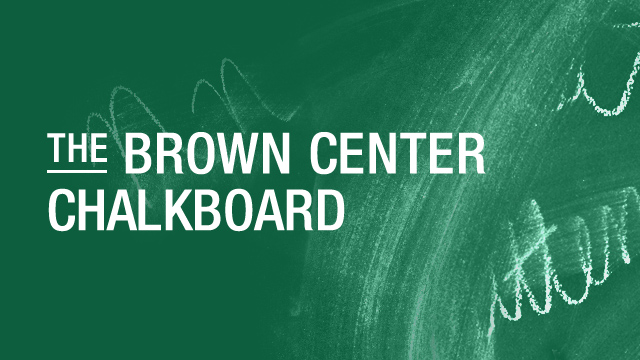

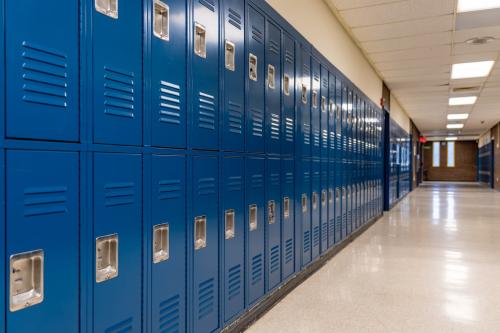
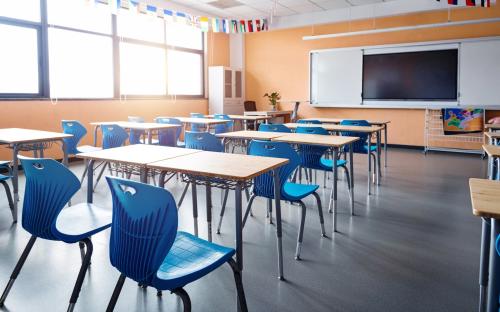

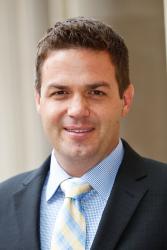





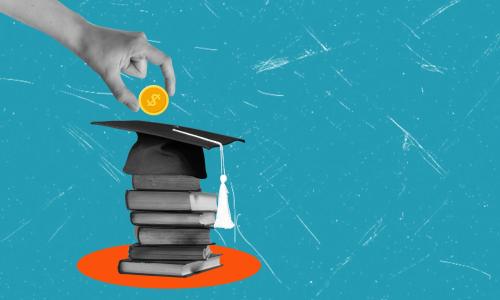
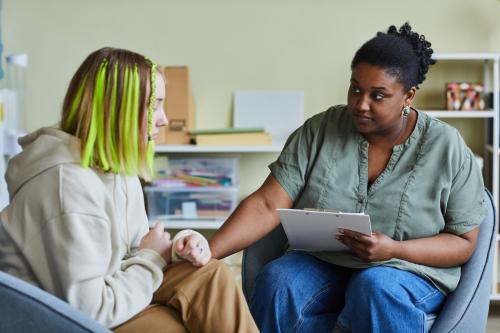
Commentary
Brown Center scholars reflect on how the pandemic reshaped US education
April 2, 2025